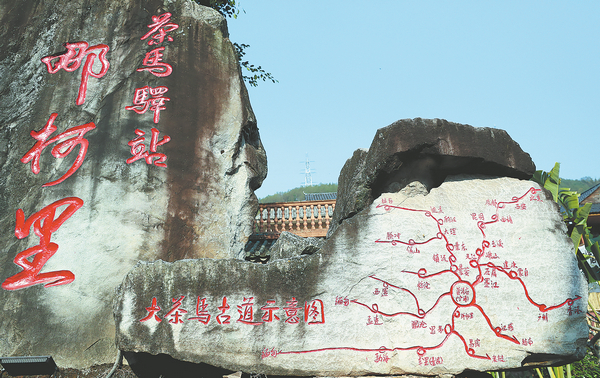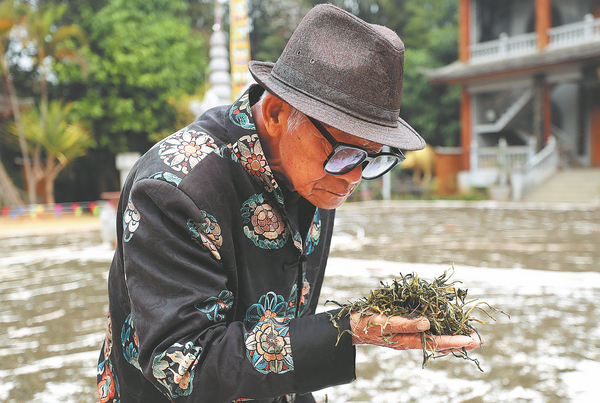A thirst for tea culture
A map of the Ancient Tea Horse Road in Nakeli, a key stop in Pu'er, Yunnan province.ZHANG WEI/CHINA DAILY
After China gave up its secrets on making silk, an ancient trade route was put to many other lucrative uses, report Deng Zhangyu and Li Yingqing in Kunming.
On a summer's day in 1990, Chen Baoya and five friends embarked on a three-month hiking trip with horses, dogs and tents in which they would explore ancient roads between Yunnan province and the Tibet autonomous region.
The roads they used had formed a network linking China with the rest of the world for more than 1,000 years.
"Our plan was to do research on linguistics and culture along the ancient route," says Chen, who with a few of the other team members were teachers at Yunnan University in Kunming, the provincial capital.
"One thing we discovered was that tea had been an important commodity along the route we trekked," says Chen, now a professor of linguistics at Peking University.
Thus it was how the trekkers coined the term chama gudao, or the Ancient Tea Horse Road, to describe the route they had covered.
Su Guowen, leader of the Blang ethnic group in Pu'er, examines the tea leaves at his tea plantation. ZHANG WEI/CHINA DAILY
They set off from Zhongdian, or Shangri-La, in Yunnan in June, traveling over snowcapped mountains, valleys and grasslands at extremely high altitudes, reaching Chamdo in Tibet and Kangding in Sichuan province, before making the return trip and being back in Shangri-La in September.
During the trek, they met tea porters who worked for horse caravans. The scholars were told that these tea porters had traveled to India with horse and mule caravans along the ancient route.
In a published research paper on the trek, they used the name the Ancient Tea Horse Road, and it attracted a great deal of attention, helping generate further research in China and elsewhere.
The name was based on the common trade of tea for horses a millennium earlier, when Chinese needed the animals as they fought to ward off enemies in the north.
The network of roads became to be increasingly used in the Song (960-1279) and Yuan (1271-1368) dynasties and stretching through to the Ming (1368-1644) and Qing (1644-1911) dynasties.
"The route had once been called the South Silk Road," Chen says. "But silk was not a necessity for most people, and the Silk Road linking China with the rest of the world was little used."
Nevertheless, before the roads became conduits for tea, silk was the predominant, lucrative commodity carried along them, its destination being wealthy people in the West.
However, as the know-how of raising silkworms and making silk became implanted in many countries, they stopped buying it from China, meaning many of the Silk Road's arteries fell into disuse.
Related articles
-
 Coffee farm volunteer programs enable young people to explore rural areas
Coffee farm volunteer programs enable young people to explore rural areasMore
-
 Teahouses offer a perfect brew of refreshment
Teahouses offer a perfect brew of refreshmentMore
-
 Qingdao: Enchanting city with an intriguing history
Qingdao: Enchanting city with an intriguing historyMore
-
 Hearing-impaired baristas show off their skills at coffee festival
Hearing-impaired baristas show off their skills at coffee festivalMore
-
 Brewing up an event steeped in culture
Brewing up an event steeped in cultureMore
-
 Steeped in history
Steeped in historyMore


